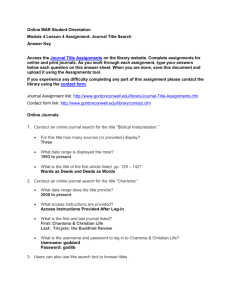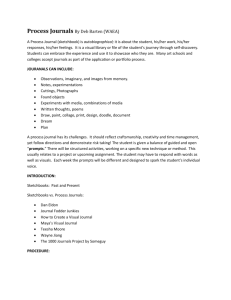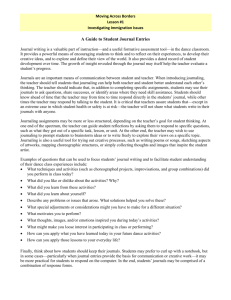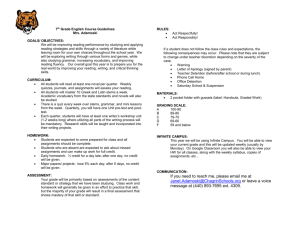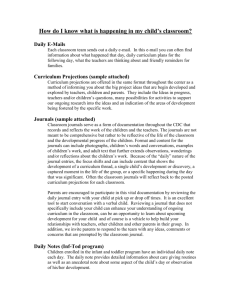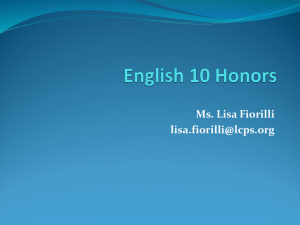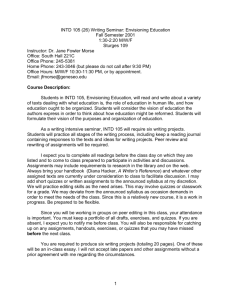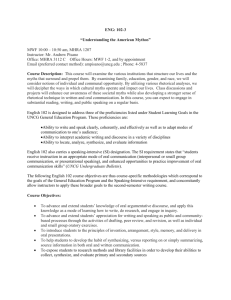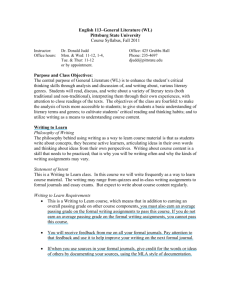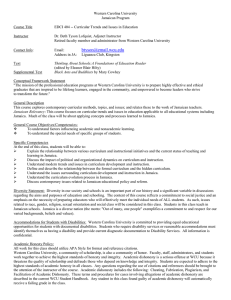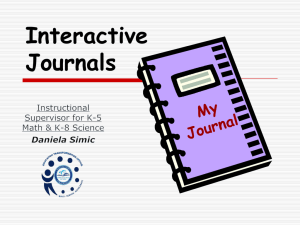Journals - Assignment Guide
advertisement
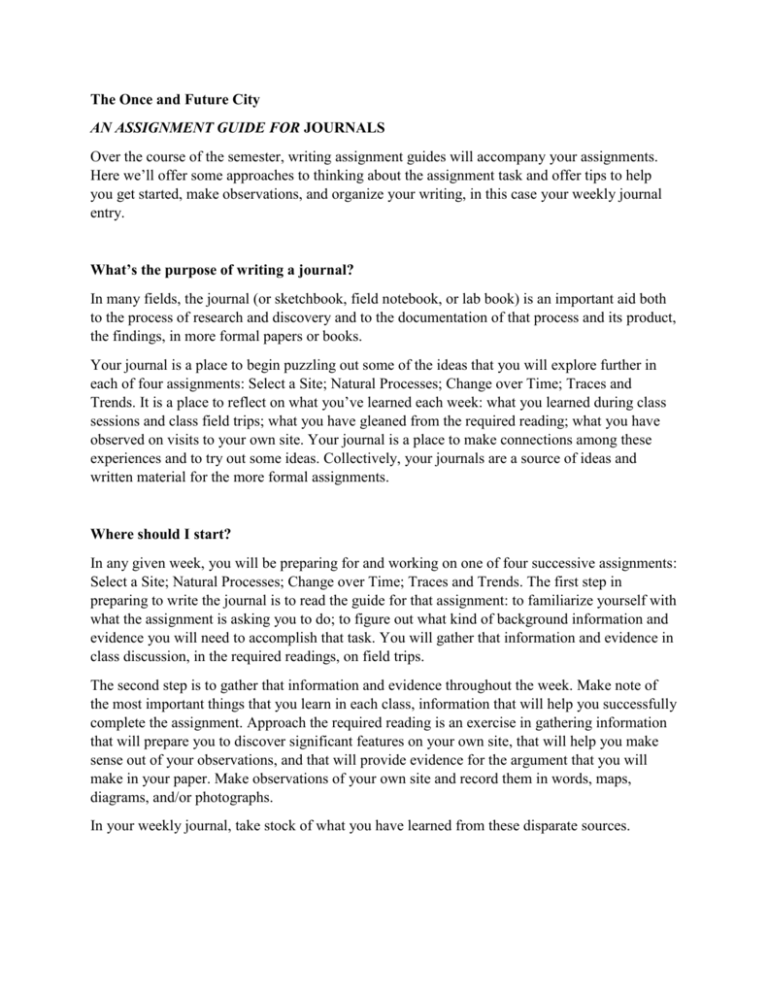
The Once and Future City AN ASSIGNMENT GUIDE FOR JOURNALS Over the course of the semester, writing assignment guides will accompany your assignments. Here we’ll offer some approaches to thinking about the assignment task and offer tips to help you get started, make observations, and organize your writing, in this case your weekly journal entry. What’s the purpose of writing a journal? In many fields, the journal (or sketchbook, field notebook, or lab book) is an important aid both to the process of research and discovery and to the documentation of that process and its product, the findings, in more formal papers or books. Your journal is a place to begin puzzling out some of the ideas that you will explore further in each of four assignments: Select a Site; Natural Processes; Change over Time; Traces and Trends. It is a place to reflect on what you’ve learned each week: what you learned during class sessions and class field trips; what you have gleaned from the required reading; what you have observed on visits to your own site. Your journal is a place to make connections among these experiences and to try out some ideas. Collectively, your journals are a source of ideas and written material for the more formal assignments. Where should I start? In any given week, you will be preparing for and working on one of four successive assignments: Select a Site; Natural Processes; Change over Time; Traces and Trends. The first step in preparing to write the journal is to read the guide for that assignment: to familiarize yourself with what the assignment is asking you to do; to figure out what kind of background information and evidence you will need to accomplish that task. You will gather that information and evidence in class discussion, in the required readings, on field trips. The second step is to gather that information and evidence throughout the week. Make note of the most important things that you learn in each class, information that will help you successfully complete the assignment. Approach the required reading is an exercise in gathering information that will prepare you to discover significant features on your own site, that will help you make sense out of your observations, and that will provide evidence for the argument that you will make in your paper. Make observations of your own site and record them in words, maps, diagrams, and/or photographs. In your weekly journal, take stock of what you have learned from these disparate sources. What needs to be in the journal? At the very least, every journal must reflect on the required reading and its application to the assignment at hand; in other words, how does the reading help you understand the processes taking place on your own site. You may also include reflections on class discussion and workshops, class field trips, and observations made on your own site visits. Can I include photographs or drawings or maps? Yes, if they are directly related to the points you are exploring in your journal. You should not include all of the images that you have found or made unless they contribute to understanding what you are writing about in the journal. How long should each journal be? Length may vary, but each weekly entry should be at least 250 words. What’s the difference between journals and more the formal written assignments? Journals may be more experimental. They may raise doubts or questions about what you’ve observed. They may direct questions to the teaching staff. They may be written in a more conversational style than the more formal essay. However, they should be grammatical, with no typos or spelling errors. Why do I need to submit a journal the day after I’ve completed an assignment? This is an ideal time to step back and reflect on the assignment itself, and there’s much to be learned from the process. What was most difficult about the assignment? What was most interesting? What were the most important things you learned? What do you think the strengths of your paper were? What were its weaknesses? What, if anything, would have improved the essay? What would you like feedback on? What did you learn that you could apply to future assignments? How are journals graded? Journals are graded primarily on the basis of content (reflecting on the required reading, significance of observations), but meeting the minimum length in the text, without typos, is also taken into account. Failure to submit a journal will result in a grade of F for that week. Each week’s journal is graded separately; the final journal grade is the average of the grades for all weeks. Journals represents 20% of the final grade for the class.

